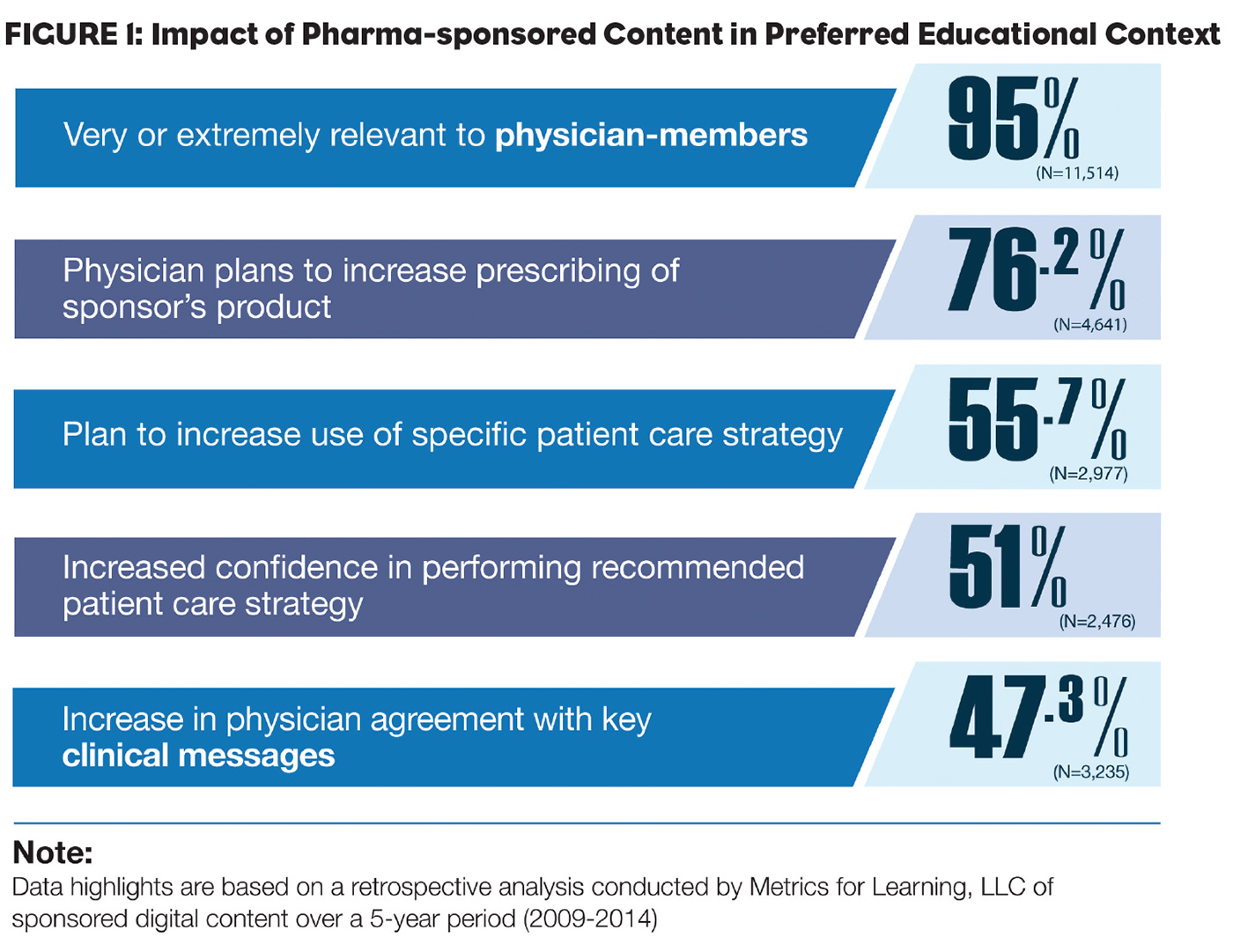As the pharmaceutical industry has shifted physician marketing from personal promotion through a dedicated sales force to a more balanced approach that includes non-personal promotion (NPP), it’s important to remember that NPP can still have a “personal” touch with healthcare professionals (HCPs). Maintaining engaging relationships with HCPs in an evolving digital world is possible.
Pharmaceutical manufacturers have long discussed HCP engagement as part of their NPP tactics, in the form of clicks and impressions with no tangible connection to physician needs. Multichannel marketing (MCM) has improved the precision of disseminating information to HCPs, but still fails to deliver on their personalized needs, as those needs change over time. We will examine how to create a more effective approach to MCM by leveraging HCP preference and behavior, and how delivering relevant content within the right context can truly impact health outcomes.
Content To Meet Physician Needs
One of the main pillars of success for personal promotion is direct communication with the customer, or HCP. This personal approach creates a more dynamic dialogue and a feedback loop for pharma and the HCP. As the digital world continues to evolve, it’s now possible for the industry to embrace a similar approach with NPP.
Providing appropriate types of content based on either an existing or future physician need is essential for driving desired action from HCPs and achieving dynamic engagement. For pharmaceutical marketers, this must begin when collaborating with partners that regularly source the types of content that HCPs prefer. This collaboration offers insights into what HCPs in specific clinical areas are actually engaging with at different times, what their questions are and what they want to learn more about.
Understanding the HCP engagement journey helps create structure around pharma marketers’ campaign strategies and also provides insight on how a brand can adapt their message, cadence and frequency for success. Simply put: Ask the customer what they want. While the regulatory groups might not approve of content that answers every physician question, turning even 25% to 50% of physician insights/questions into approvable content makes for more engaging interactions.
Delivering Content In Context
Once appropriate types of content are produced, evaluating what other types of relevant information are available to the target audience is critical. Is the physician also engaging with similar or complementary content on that platform? What other hot topics and areas is the physician interested in and does that influence their likelihood of engaging with your message?
For example, rheumatologists across the country engage in a variety of content. Some of it is related to annual congresses (e.g., ACR/EULAR), new and emerging research and treatments, and practice-specific information. Pharma marketers need to effectively align the timing and relevance of their message with audience interests throughout the content cycle.
Key Opinion Leaders (KOL) and experts also play an important role, whether they are directly a part of the content being disseminated or completely separate from the pharma message. Content timing, relevance and KOL credibility are the keys to engaging in meaningful interactions with HCPs and can significantly influence the impact of the brand’s message and the overall success of the campaign. This is a strategy that industries outside of the healthcare space have embraced successfully for some time now.
Physician Preference
Beyond employing relevant types of content within context, it’s important to consider physician preference. Historically, sales reps in the field have been able to adjust their approach based on their knowledge of unique preferences for a specific physician.
Understanding how and in what form physicians most prefer to receive information can be a crucial driver behind NPP tactical campaigns. The key factors to consider are: Desired channel (email, direct mail, mobile, web, etc.), preferred content form (short video, eDetail, Q&A format, etc.), preferred content message (safety, efficacy, etc.), along with where the physician may be on the engagement continuum (awareness, interest, preference, etc.).
For pharma marketers, adapting their messages to align with the interests and needs of HCPs is key to driving action. Collaboration with partners that serve as a meaningful resource to HCPs is the gateway to truly understanding physician preference and an appropriate push and pull strategy required to meet physician needs.
Physician Behavior—Evaluating Success
Much like any other customer, HCPs express preferences for channels, content and forms of interaction, but may not necessarily consume product within those specified parameters. Evaluating varying levels of action or inaction at different times, across a broad spectrum of HCPs, and across different content can help dictate an appropriate follow-up strategy for communicating with HCPs. Key measures to evaluate as a result of specific HCP interaction include impacts on driving desired action—for example, effects on practice decisions and prescribing, as well as meeting new learning benchmarks.
Recently, Healthcasts commissioned a study of the impact and effectiveness of pharmaceutical-sponsored digital content. The study addressed important learning benchmarks (self-reported by physicians) (Figure 1), such as: Relevance to their practice intent to follow patient strategy, intent to prescribe, and confidence and agreement with messaging. Retrospective analyses, whether done on an aggregate level or with an individual HCP interaction or campaign, can provide a wealth of insight into the attitudes, behaviors, and interests of the HCP audience.
Over the course of the year, we will continue to examine and discuss opportunities within the HCP education space. In the next piece, we will dive deeper into serving the needs of physicians to drive better engagement across various clinical specialty areas.






